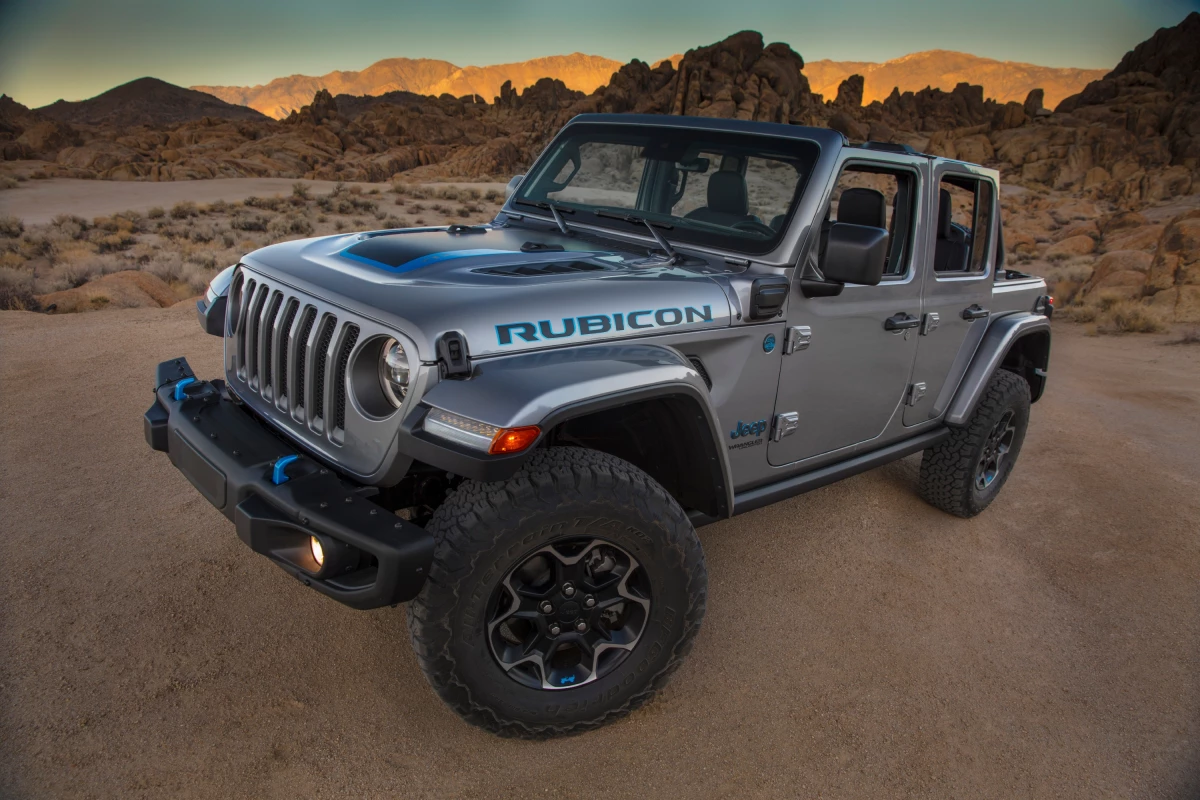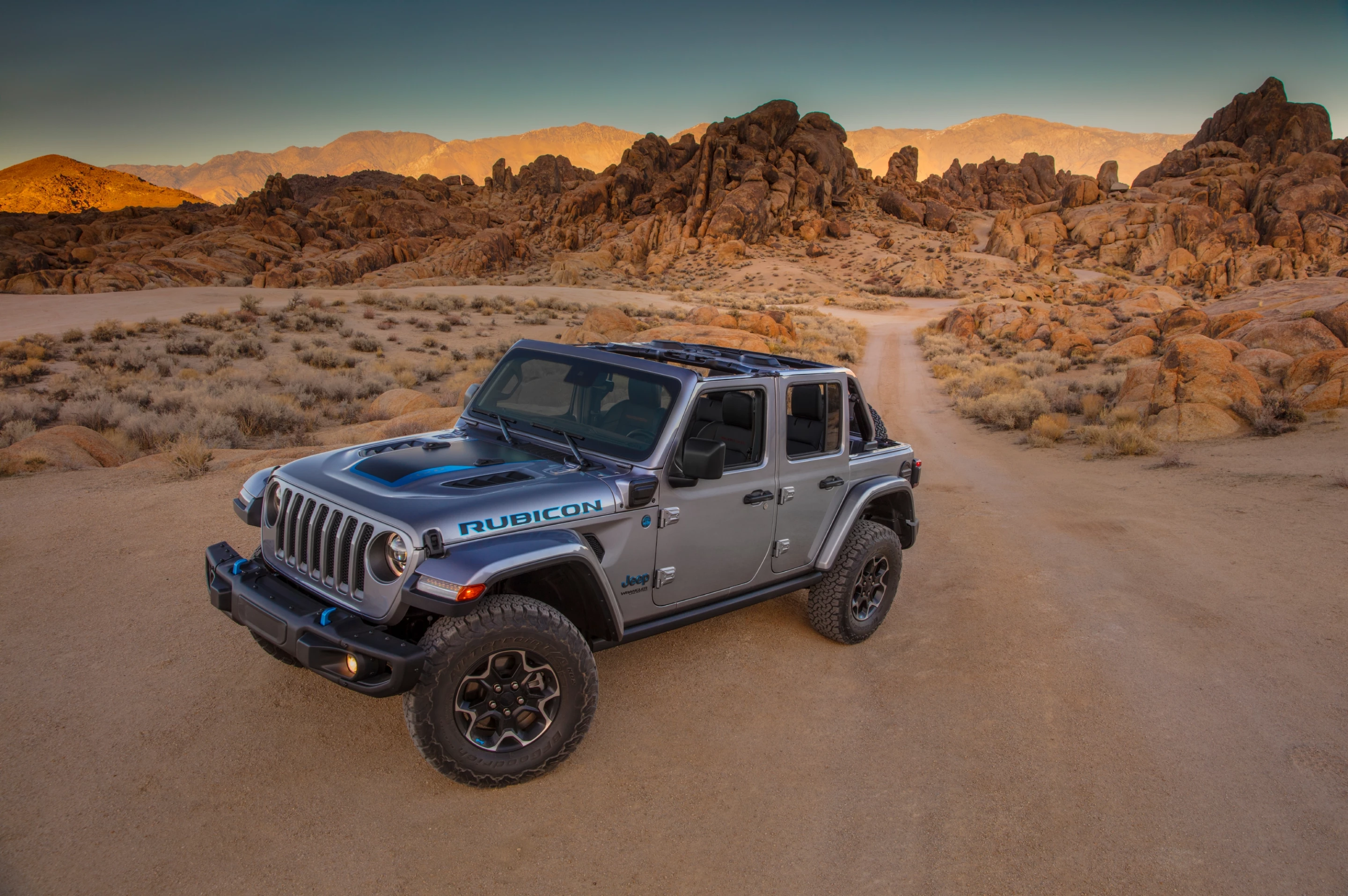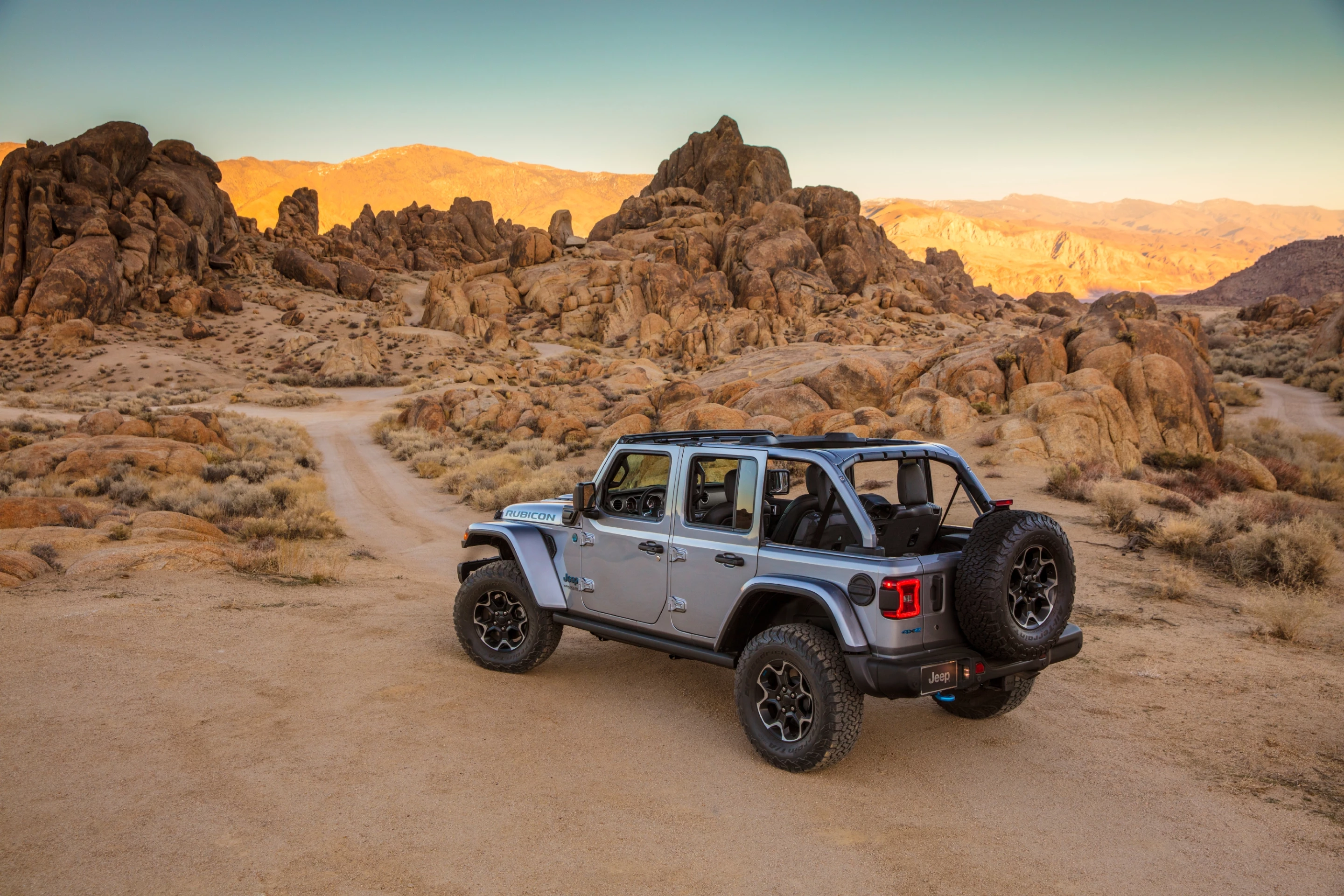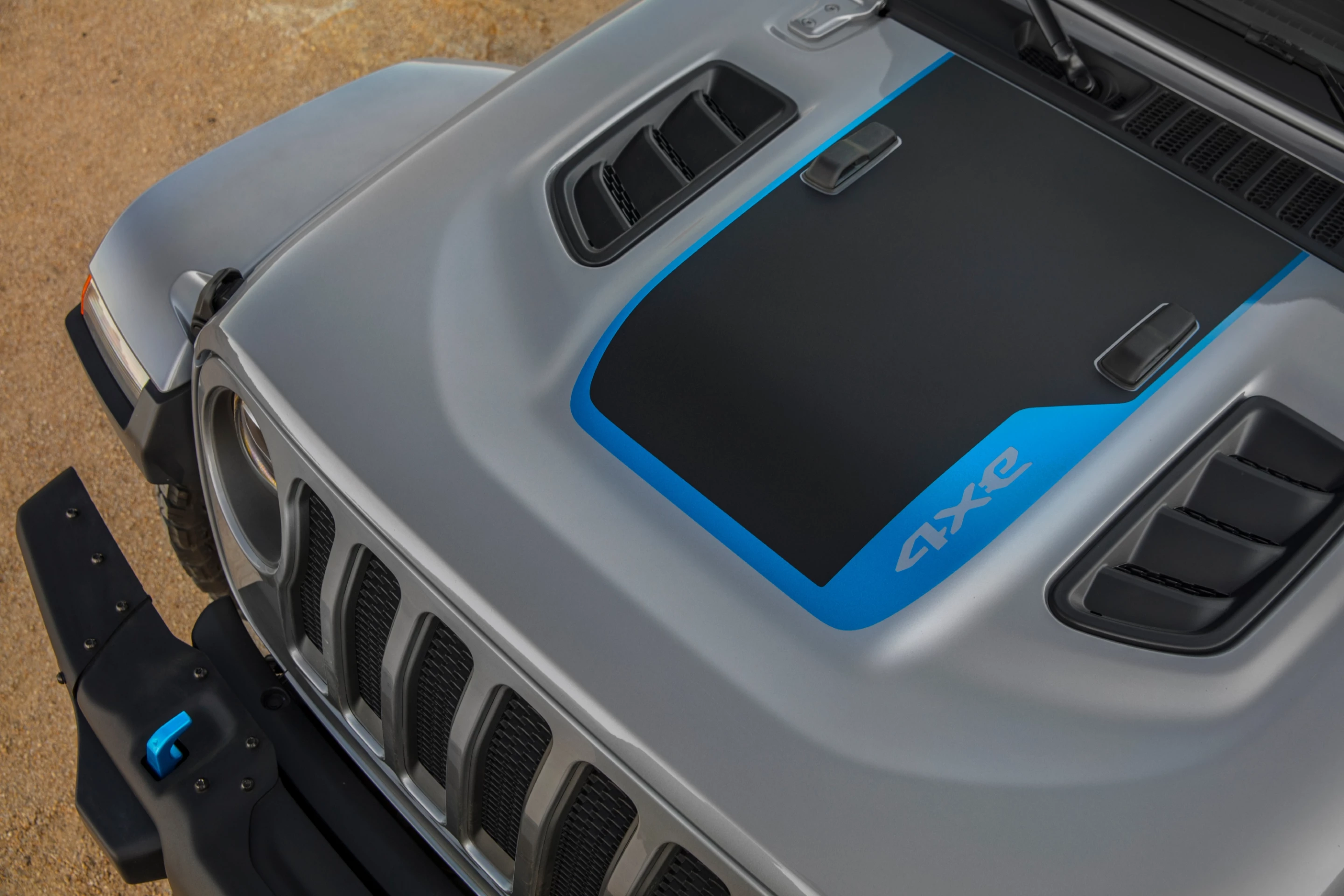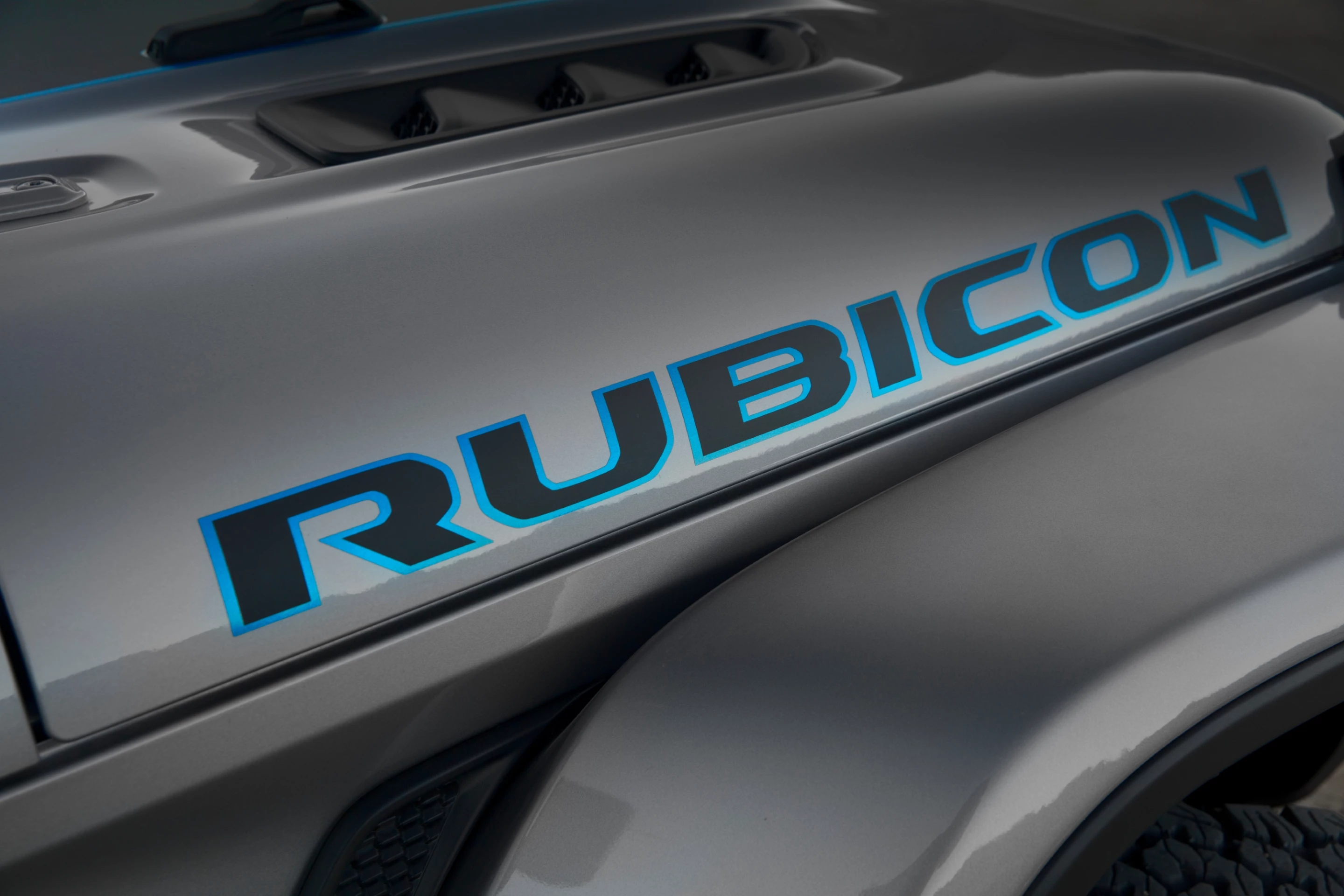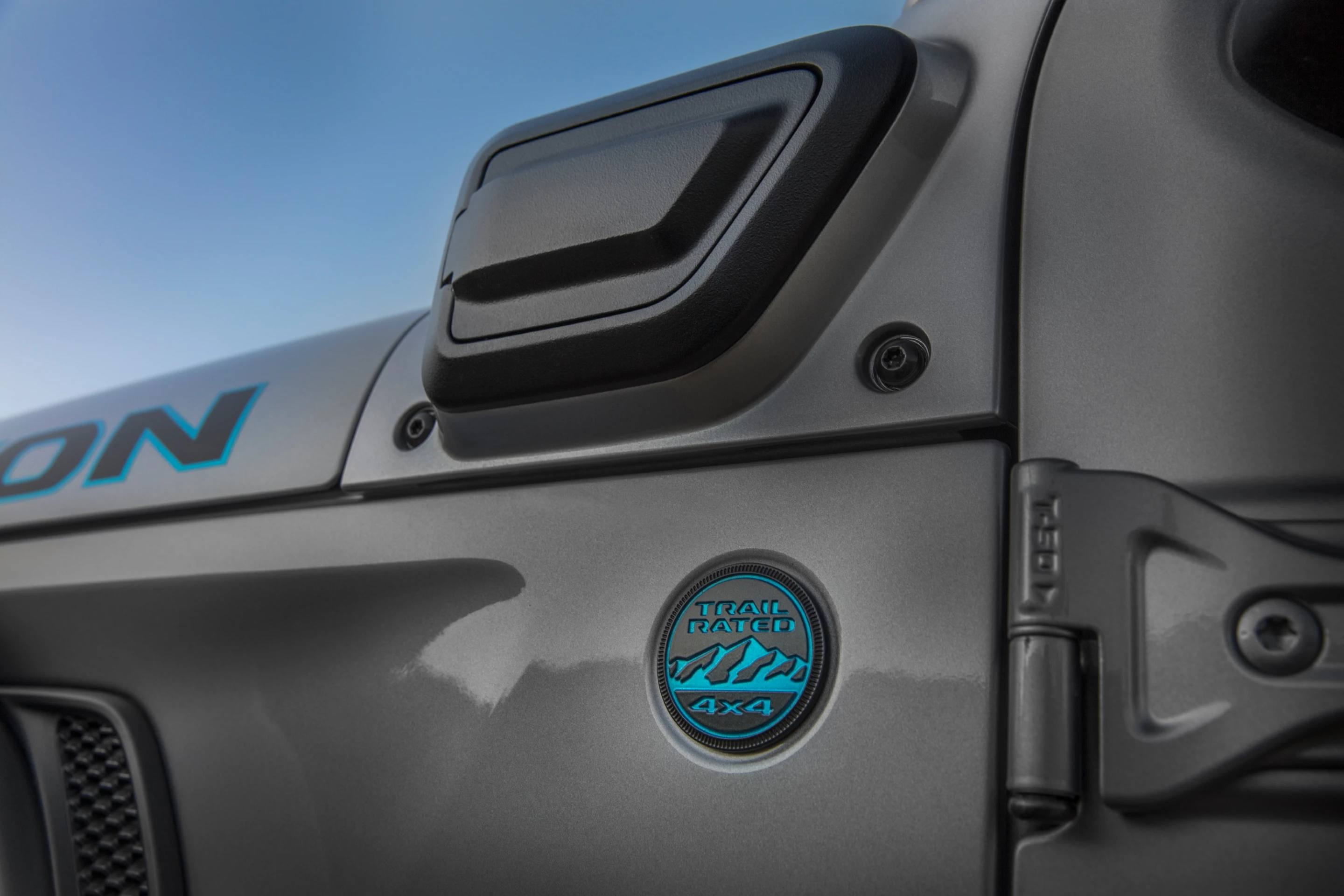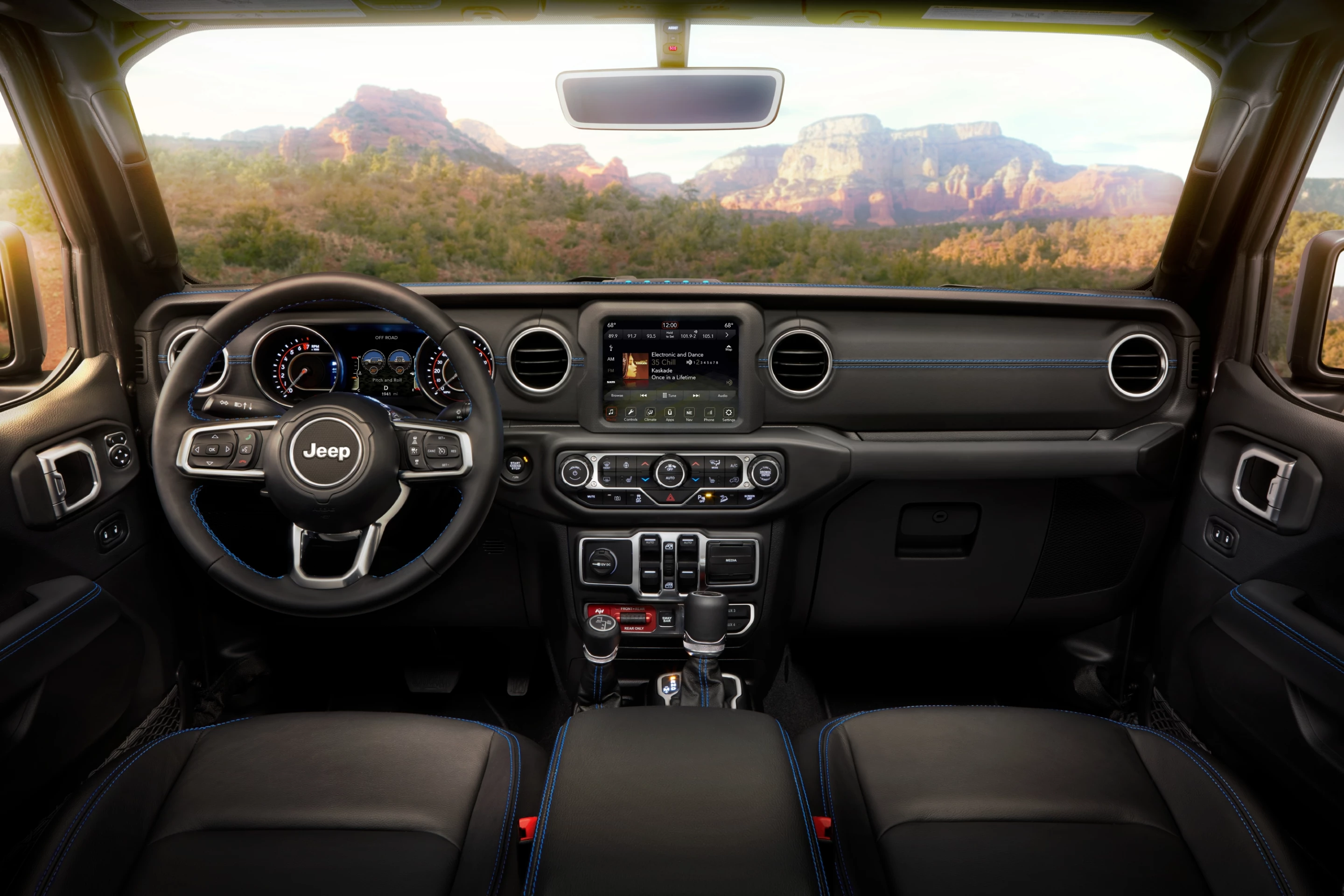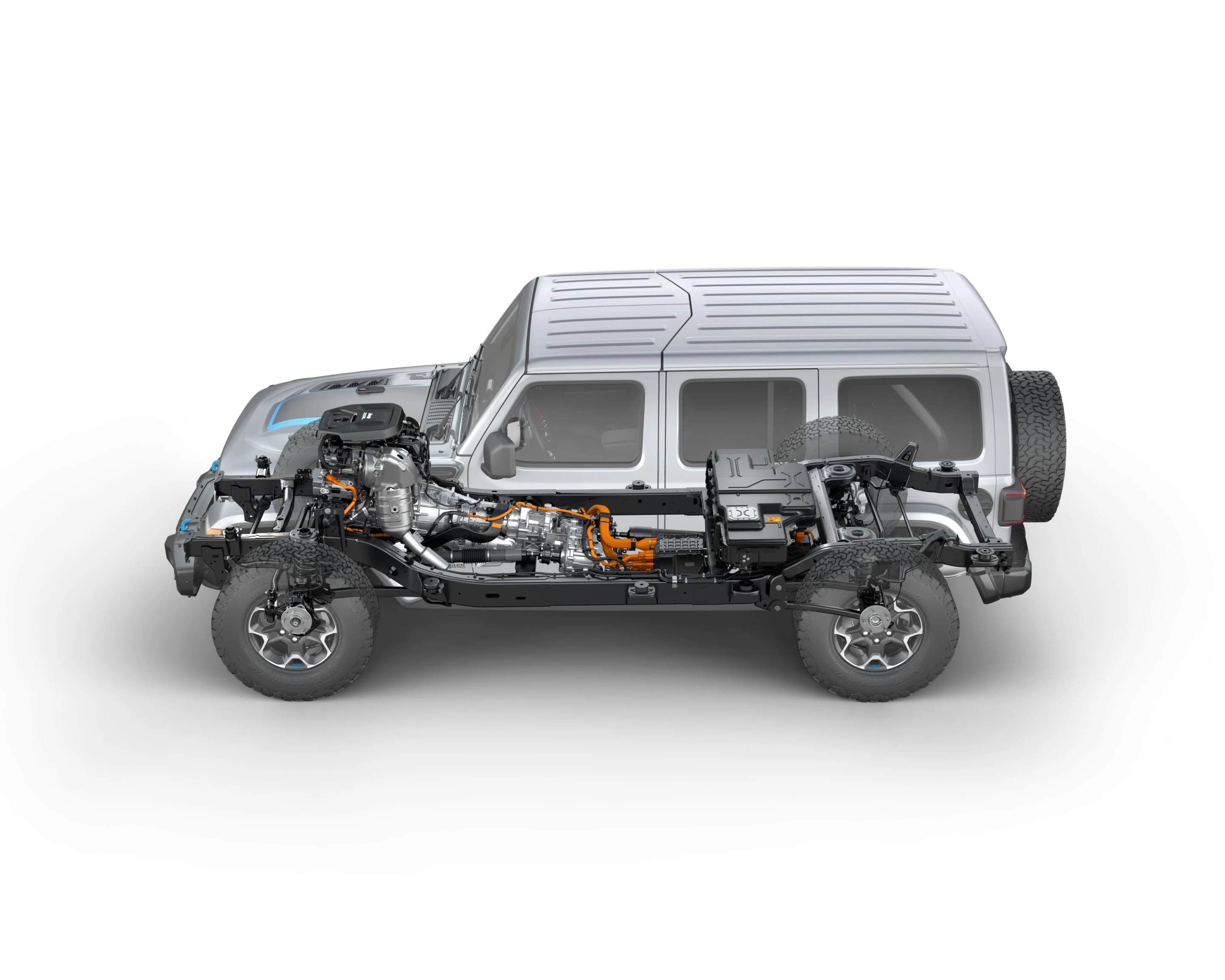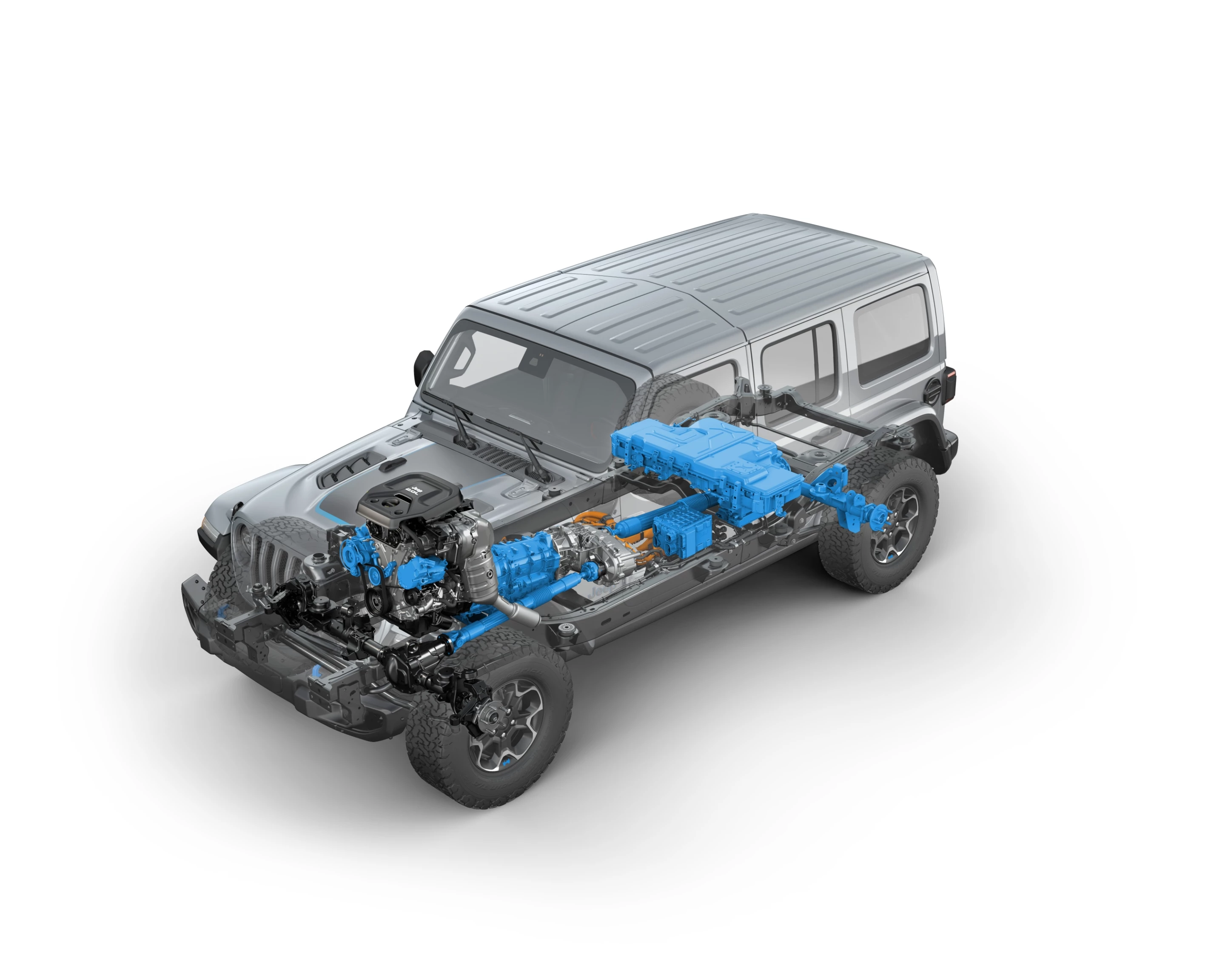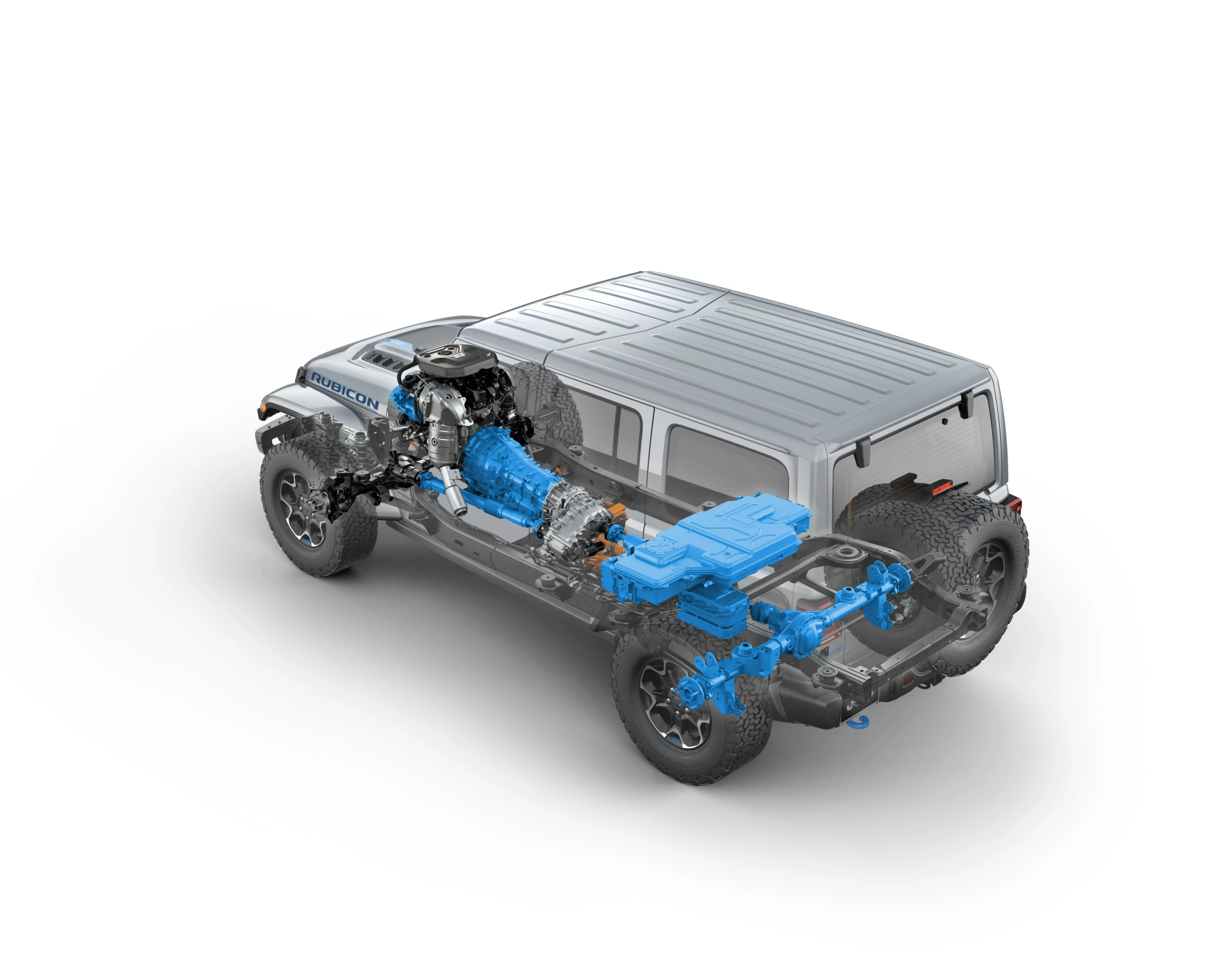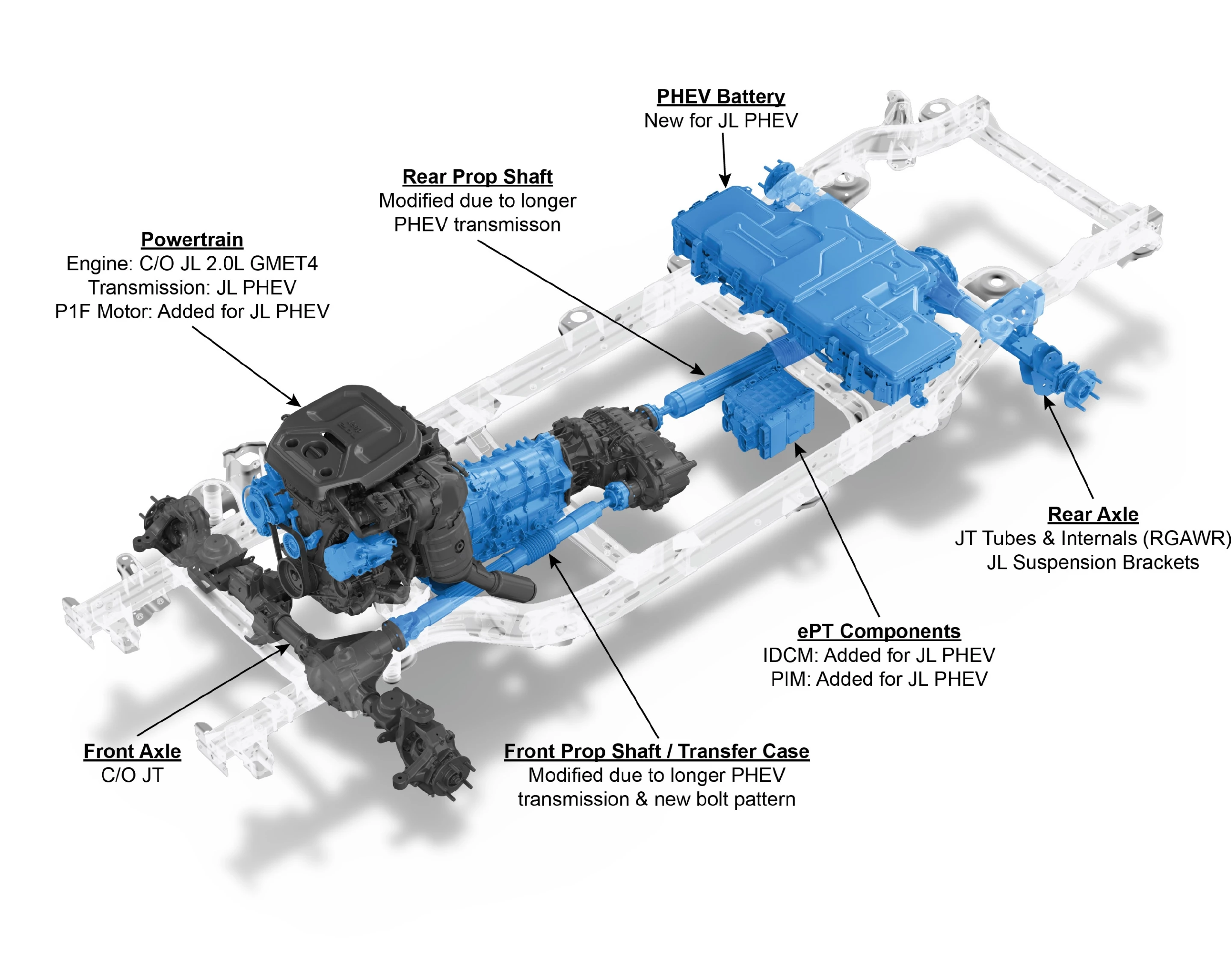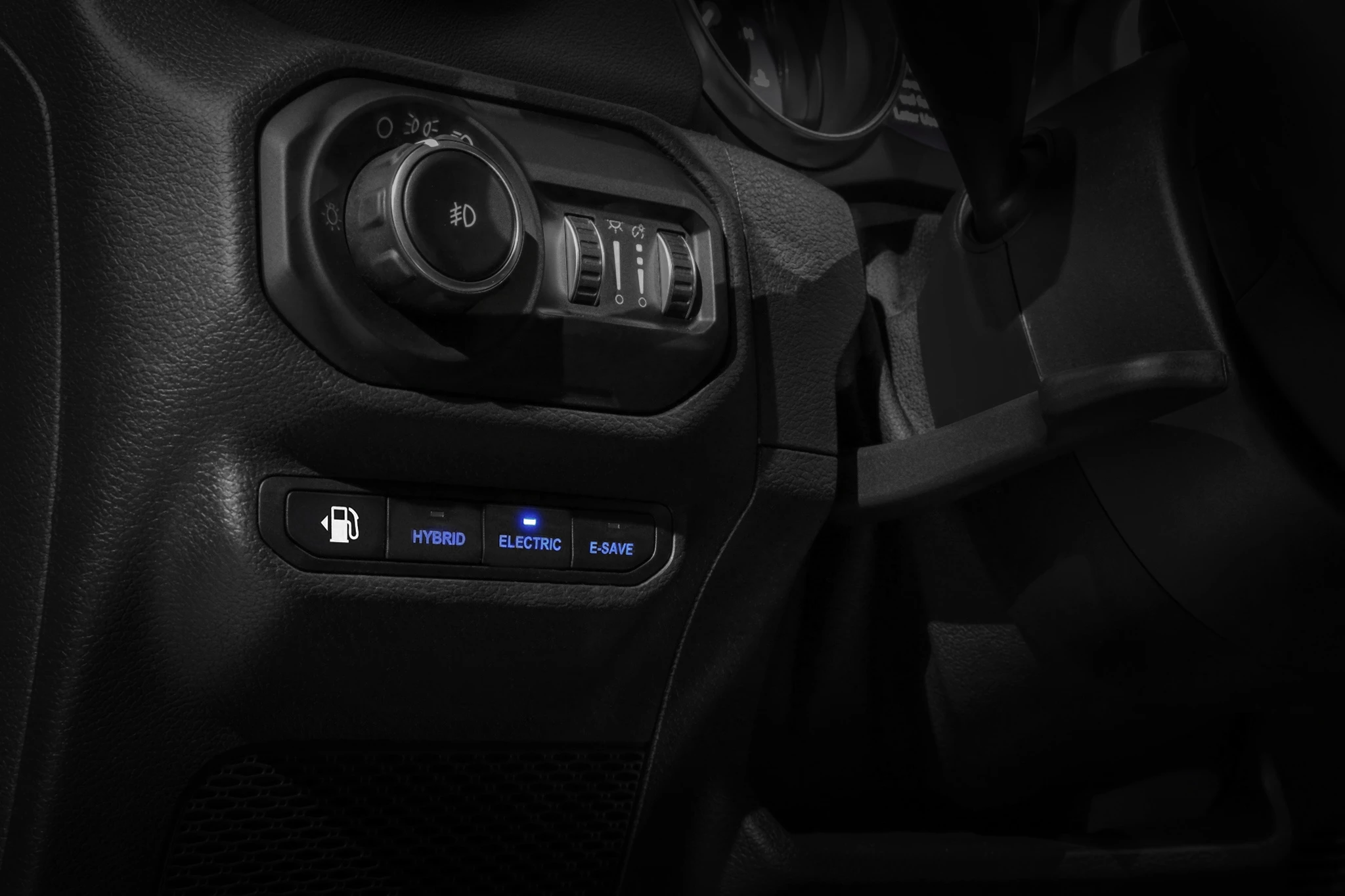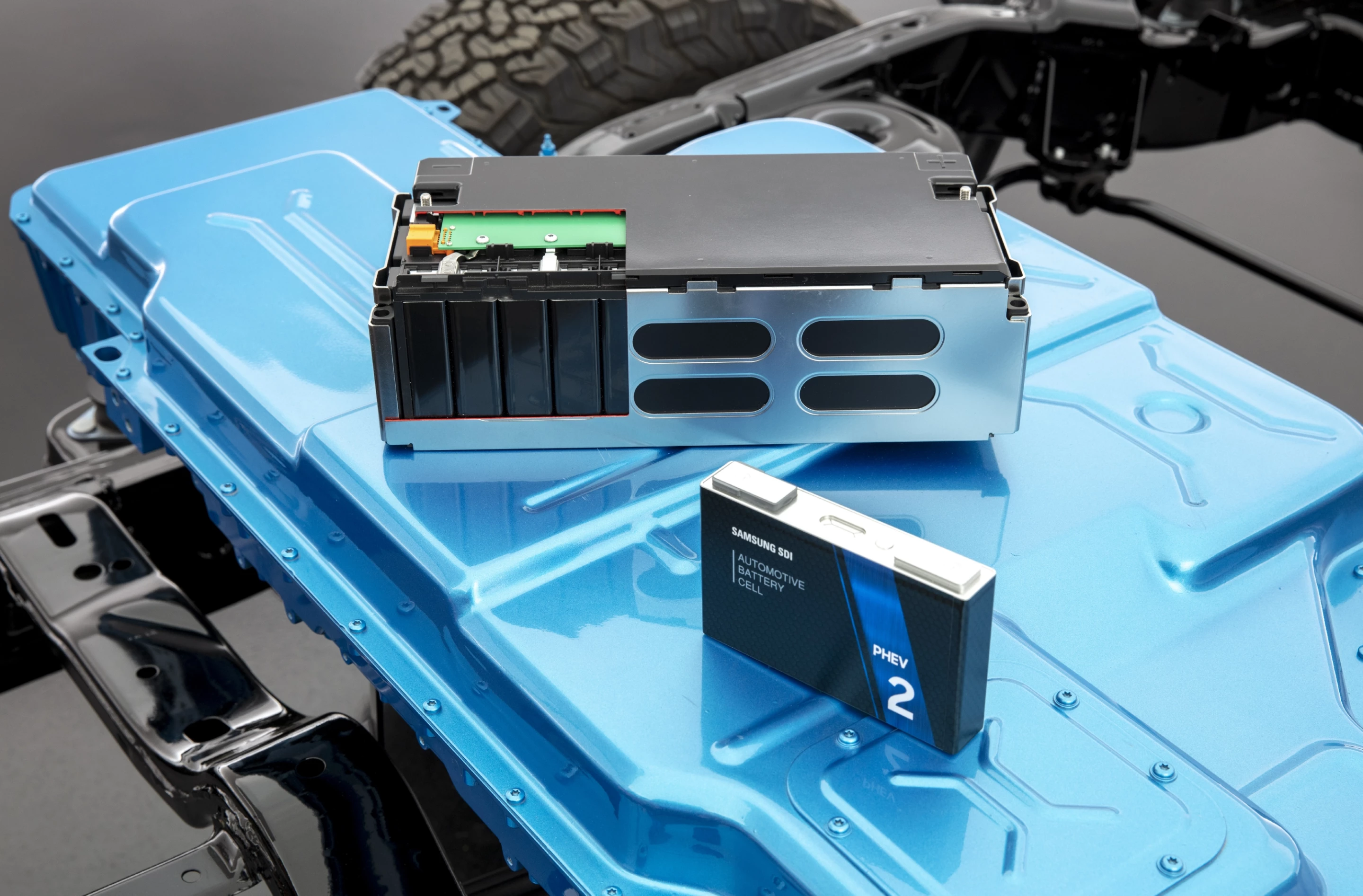Jeep’s new 4xe sub-brand of electrified vehicles has added the iconic Wrangler to its growing list of plug-ins. The Wrangler 4xe is a plug-in hybrid version of the new-generation Wrangler, and has been designed from the ground-up to be electrified. It boasts up to 25 miles (40 km) of all-electric mobility and an estimated 50 MPGe (4.7 l/100km).
The Wrangler is an icon of off-road prowess and capability, and is the vehicle most people immediately associate with rugged outdoor adventures. Jeep’s debut is of the promised plug-in hybrid (PHEV) option for the Wrangler. That promise, made when the current-generation Wrangler debuted for the 2018 model year, marks the third PHEV in Jeep’s lineup. All three, including the Renegade and Compass, will enter the US, Chinese and European markets by early 2021. More electrified Jeep models are promised to follow.
"Our Jeep 4xe vehicles will be the most efficient, responsible and capable that the brand has ever created," said Christian Meunier, Global President of Jeep Brand - FCA.
The Wrangler 4xe will use a similar (but more powerful) version of the plug-in system found in the other two Jeeps. The powertrain combines a 2.0-liter turbocharged four-cylinder engine with two electric motors, an eight-speed automatic transmission, and a 17-kWh battery pack. The 96-cell pack delivers 400 volts, is mounted beneath the second row seating, and gives the Wrangler up to 25 miles of all-electric drive. Total system output is 375 horsepower (280 kW) when both engine and motors are working together. That compares to the 240 hp (179 kW) of the Renegade and Compass 4xe models.
Motors for the Wrangler 4xe are mounted separately. One mounts in the transmission itself, replacing a traditional torque converter and acting as an in-line power booster to aid the engine via both rear-wheel and four-wheel drive operations. A two-clutch system connects the engine to the motor and the motor to the transmission. This allows the engine to be decoupled from the motor for all-electric operation and re-coupled for combined hybrid propulsion. The clutch between the motor and transmission is variable to manage engagement for smoother transitions.
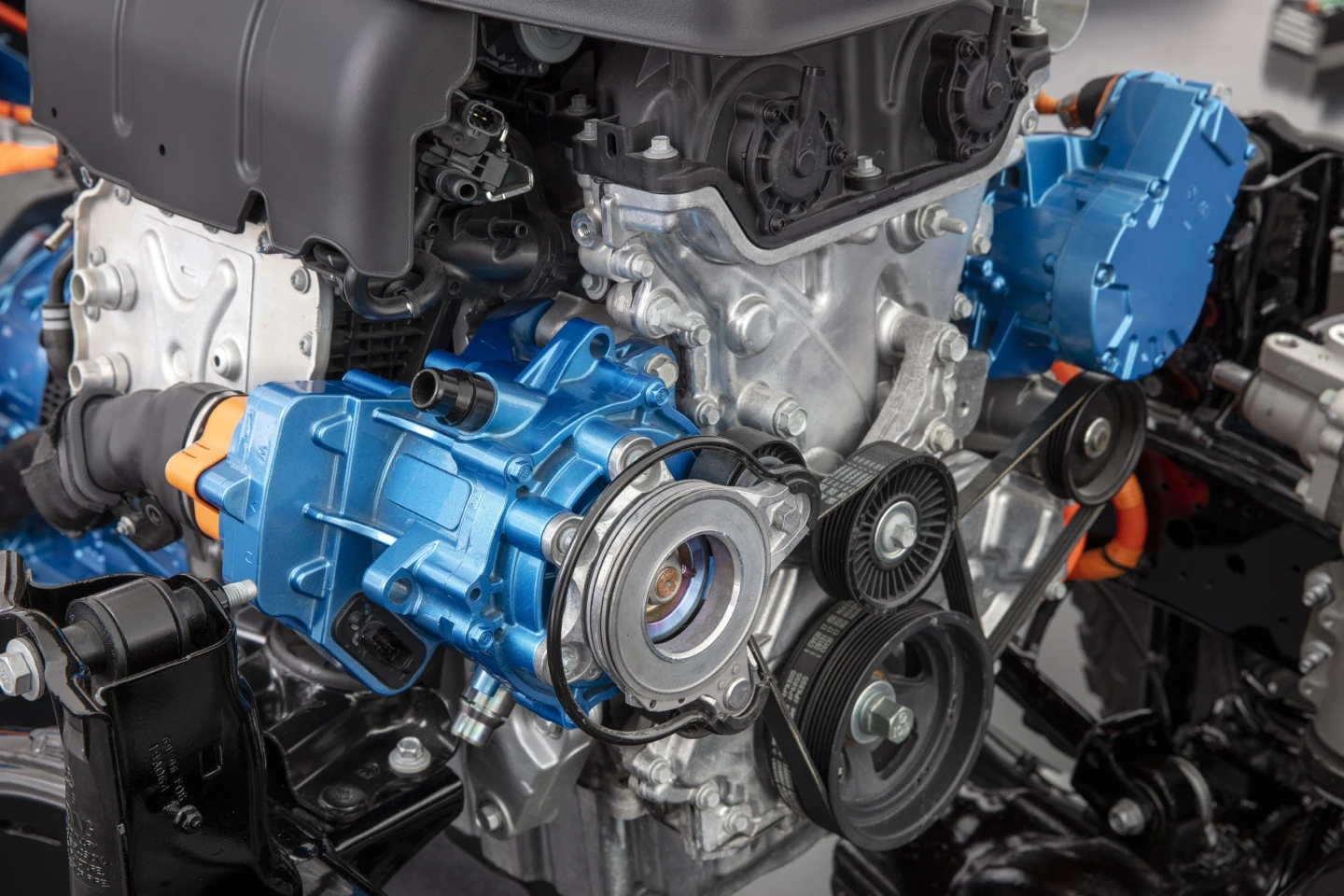
The other motor mounts to the Jeep Wrangler 4xe’s engine, acting as a starter unit, power regenerator, and alternator. It's much like the motors mounted to the mild hybrid Ram 1500 pickup truck and other vehicles in the Fiat-Chrysler line.
Batteries in the 4xe are mounted underneath the rear seating. The 96-cell pack uses nickel manganese cobalt (NMC) graphite chemistry, and the controls and pack are combined and kept above the Jeep’s frame for protection. The modified rear seating in the Wrangler 4xe can flip forward to allow access to the electronics and batteries when needed. The battery systems are encased in aluminum, and have dedicated heating and cooling systems for thermal maintenance.
An Integrated Dual Charging Module (ICDM) reduces the size of the battery charger and DC/DC converter. The goal with the battery pack’s design was to maintain the interior room of the Wrangler, keeping it unchanged. And to maintain capability, with the Wrangler being able to ford up to 30 inches (76 cm) of water and retain the Trail Rated Jeep moniker that Wranglers exemplify.
Jeep plans to sell the Wrangler 4xe globally, but hasn’t given timeframes for markets outside of the US, China, and Europe. Plugs for the Jeep models will vary by region to match what’s most available for consumers. The plug port is located at the left-front cowl so the rig can be nosed in at charging locations, reducing cord reach. LED indicators of charge status (similar to those found on the Chrysler Pacifica Hybrid) indicate charge status. Another LED lit battery monitor sits atop the dashboard near the windscreen, so charge state can be seen from afar.
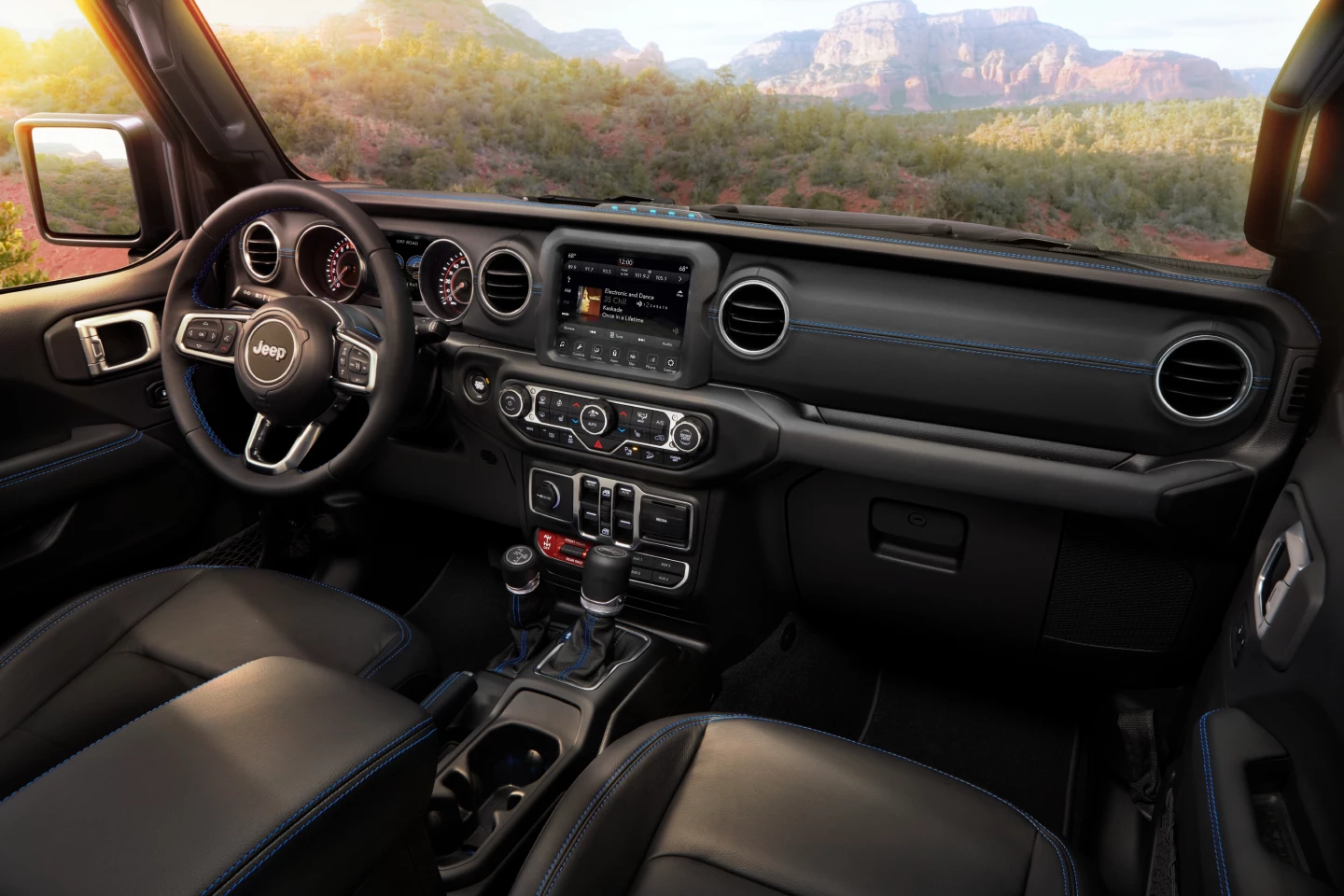
Drivers of the Wrangler 4xe will have three drive modes to choose from, starting with Hybrid (standard engine-motor combination driving), Electric (forcing all-electric mode, when possible), and eSave (saving battery power for later use). Whatever choice is made, the Wrangler 4xe can regenerate power via all four wheels. A Max Regen option allows the regeneration system to act as a sort of engine brake, slowing the Wrangler faster and gaining more energy in the process. Max Regen is a toggled option selectable by the driver.
For most onlookers, the Wrangler 4xe will appear to be identical to all other current-generation Jeep Wrangler models with one exception – that being the blue highlights seen on the 4xe’s badges and interior. Like most Jeep models, especially the Wrangler, a host of Mopar and aftermarket parts are available to customize the rig.
The Jeep Wrangler 4xe will be available in three trim levels: the base 4xe, the Sahara 4xe, and the Rubicon 4xe. The 4xe and Sahara 4xe models have full-time four-wheel drive systems equipped on Dana 44 axes (front and rear) and two-speed transfer case. Low gear ratio in that transfer case is 2.72:1. A Trac-Lok limited-slip rear differential is offered as an optional upgrade.
The Rubicon 4xe model uses the Rock-Trac 4x4 system that’s found on other Rubicon models. This features a 4:1 low gear ratio, full time 4x4, next-generation Dana 44 axles at front and rear, and Tru-Lok electrically-actuated axle lockers at both front and rear. Full crawl ratio for the Wrangler Rubicon 4xe is 77.2:1.
The Rubicon model with the V6 engine has an 84.2:1 crawl (manual transmission) and 77.2:1 (automatic), for comparison. In most every way, except for the instant torque from the electric propulsion, the Wrangler Rubicon 4xe will be like the other Rubicon models in the Wrangler line. Approach angle is 44 degrees, breakover is 22.5 degrees, and departure angle is 35.6 degrees. Ground clearance is 10.8 inches (27.4 cm).
The 2021 Jeep Wrangler 4xe will enter markets in late 2020 and early 2021. Pricing and full availability information will be released before launch.
Source: Jeep
